From palm-fringed beaches to plunging canyons, historic cathedrals, and mural-splashed city streets, Mexico is one of the most dynamic countries in the world.
But it doesn't stop there. Mexico has thousands of years of history, epic landscapes, towering mountains, ancient ruins, world-class cuisine, and 5,800 miles of coastline that create an endless list of things to do for travelers. From laid-back beach towns to cosmopolitan culture and historic colonial towns, Mexico really is a paradise for every type of visitor.
But where to begin? It would be impossible to capture the best of Mexico all in one shot. But there are certainly top tourist attractions and places to visit in the country that are iconic to understanding the destination.
If you're ready to dive into one of the most impressive countries in the world, read our list of the top things to do in Mexico.
1. Bask on Mexico's Caribbean Beaches
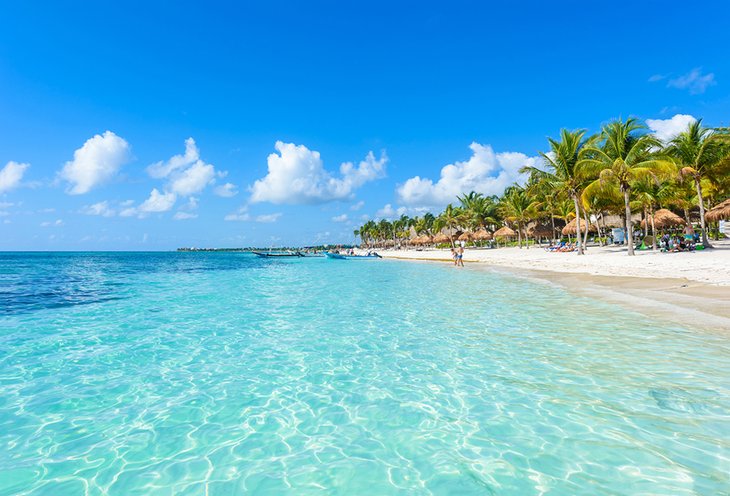
Mexico has more than 5,800 miles of coastline, but none of its beaches are more impressive than the Caribbean coast. Along the Yucatan Peninsula, from Cancun down to the border of Belize, are some of the most stunning beaches in the world.
Cancun's beaches are lined with world-class hotels and resorts, with miles of expansive sugar-colored sand and shockingly blue water. Farther south, travelers will discover the energy of Playa del Carmen, a thriving city on the sea.
Past Playa del Carmen, discover the once-rugged town of Tulum, which has grown to be a top luxury getaway, with A-list hotels, restaurants, and boutique shopping, all along a beautiful stretch of bleached sand.
Even further south, travelers will discover undeveloped, remote beaches along the Sian Ka'an Biosphere Reserve, the tiny beachfront community of Mahahual, and the remote beaches that lead the way down to Belize.
2. Experience the World of Xcaret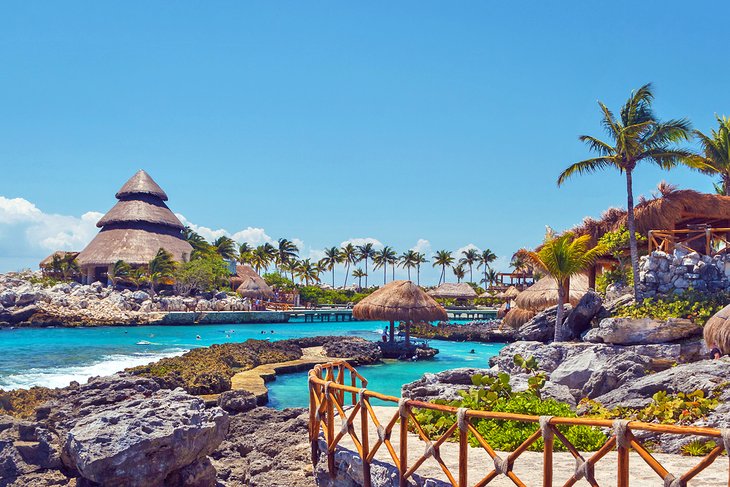 Thousands of visitors from all over the world flock each year to Mexico's most popular theme park, Xcaret. This ultimate cultural experience is part of Grupo Experiences, one of the largest, most beloved companies in Mexico offering regional entertainment.
Thousands of visitors from all over the world flock each year to Mexico's most popular theme park, Xcaret. This ultimate cultural experience is part of Grupo Experiences, one of the largest, most beloved companies in Mexico offering regional entertainment.
Xcaret, their most popular, is dedicated to Mayan heritage and culture, which is indigenous to this part of Mexico. The park has more than 50 natural and cultural tourist attractions, including a jungle, beach, and underground rivers.
Learn about ancient Mayan customs through live performances, or immerse yourself in the natural environment, like the coral reef aquarium.
Grupo Experiencias has other theme parks as well, which include ziplines and lazy rivers, water parks, cultural shows, and more.
3. Dive or Snorkel Cozumel's Teeming Waters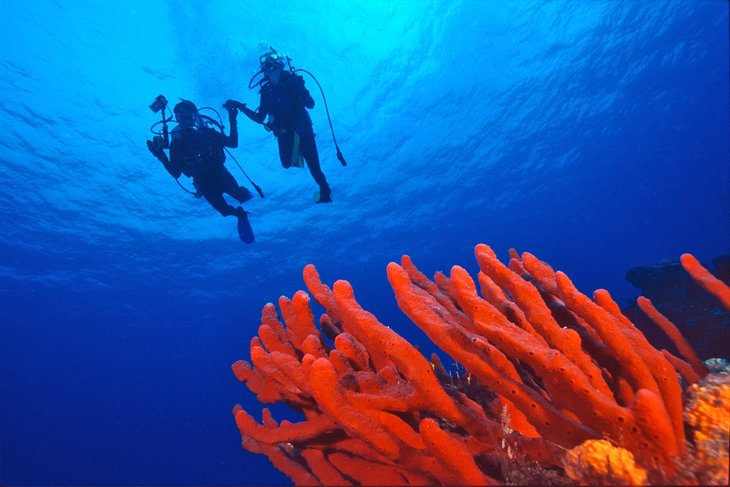 One of Mexico's largest islands (and by far its most famous), Cozumel is a must-see attraction in Mexico. The Caribbean island sits just off the coast of Playa del Carmen and is one of the biggest cruise ports in the country.
One of Mexico's largest islands (and by far its most famous), Cozumel is a must-see attraction in Mexico. The Caribbean island sits just off the coast of Playa del Carmen and is one of the biggest cruise ports in the country.
It's known for its sugary, powder-soft sand; crystal-clear, turquoise water; and, most notably, for its diving and fishing, which is among the very best in the world.
The warm waters around Cozumel are teeming with sea life. The destination is legendary among divers for this reef system, which is a part of the Mesoamerican reef system, second in the world in size to Australia's Great Barrier Reef. The reef is protected by the Cozumel Reefs National Marine Park and is home to more than 26 coral species and more than 500 species of fish.
If you'd rather frolic with fish above the water, summer is the best time of year for fishing in Cozumel. Sailfish, marlin, mahi-mahi, and tuna flock to the warmer waters. Within a couple of minutes of the marina, the shoreline plummets about two miles deep, making it a prime gathering point for big game fish.
The island is popular for cruisers and day-trippers but has plenty of hotels, resorts, restaurants, and tourist attractions to offer its own type of vacation. There's even an international airport on the island.
Only half of Cozumel is open to visitors, while the other half is protected as a natural preserve. The western coast has the most popular beaches and hotels, while the eastern Caribbean-facing side has wilder, untamed beaches and more off-the-beaten-path hideaways.
4. Surf the Pacific Coast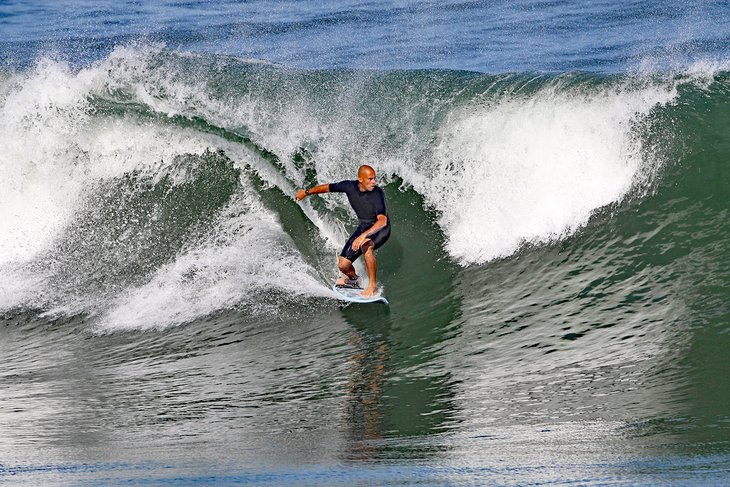 From the Baja Peninsula all the way down to the beaches of southern Oaxaca, Mexico's Pacific Coast is a veritable aquatic playground for surfers of all levels. From big name surf competitions to secret coves with gentle lapping waves, everyone from the international pros to the extreme beginners will be able to catch a perfect wave along Mexico's Pacific Coast.
From the Baja Peninsula all the way down to the beaches of southern Oaxaca, Mexico's Pacific Coast is a veritable aquatic playground for surfers of all levels. From big name surf competitions to secret coves with gentle lapping waves, everyone from the international pros to the extreme beginners will be able to catch a perfect wave along Mexico's Pacific Coast.
The Baja Peninsula has been a favorite surf spot for world travelers chasing that endless summer for decades. Spots like Ensenada and Todos Santos are legendary. But it is far from over at the end of the peninsula.
Mazatlan in the state of Sinaloa, Punta Mita along the coast of Nayarit, Troncones in Guerrero, and the area around Puerto Escondido in Oaxaca are other A-list Mexican surf breaks worth diving into. In fact, just off the coast of Puerto Escondido is the world-famous Mexican Pipeline, which is one of the top places to surf on the planet.
5. Tap Your Spiritual Side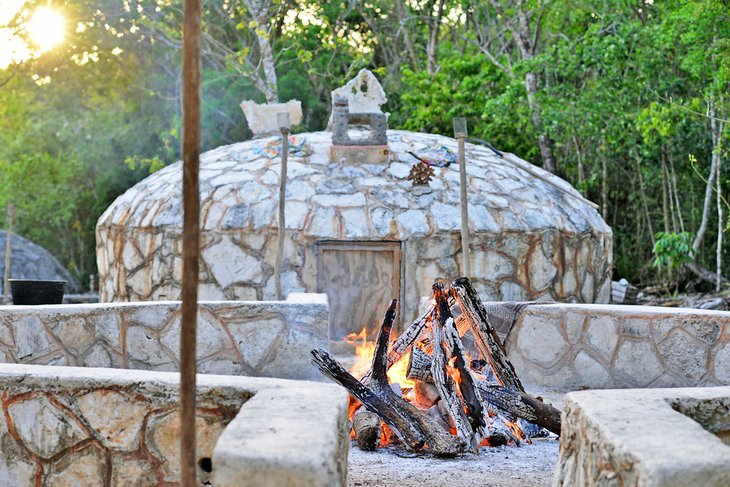 Mexico may be a predominantly Catholic country, but its spirituality is rooted in ancient practices. A deep history of shamanism is prevalent in many different indigenous groups across Mexico, from the Mayans of the Yucatan Peninsula to the Huichol in the central Northwest in the Sierra Madre Occidental Mountains.
Mexico may be a predominantly Catholic country, but its spirituality is rooted in ancient practices. A deep history of shamanism is prevalent in many different indigenous groups across Mexico, from the Mayans of the Yucatan Peninsula to the Huichol in the central Northwest in the Sierra Madre Occidental Mountains.
Today, many travelers flock to Mexico for spiritual healing. San Cristobal de las Casas, for example, is a mountain town in the southern state of Chiapas known for its mysticism. Here shamanism is alive and well among the Tzotzil people, an indigenous Maya people who occupy the highlands. Visitors come from all over the world for workshops in meditation and yoga.
One of the most popular healing rituals in Mexico is the temazcal ceremony. The ceremony involves a sweat lodge, combined with a sacred ritual, that leaves participants feeling cleansed - emotionally, physically, and mentally. The 1,000-year-old ceremony includes a spiritual guide, who takes participants on a healing journey within the sweat lodge, combined with songs, chanting, and prayer. Those who participate in temazcal have reported clearer skin, increased blood flow, and relief of stress.
6. Take a Boat Trip to El Arco de Cabo San Lucas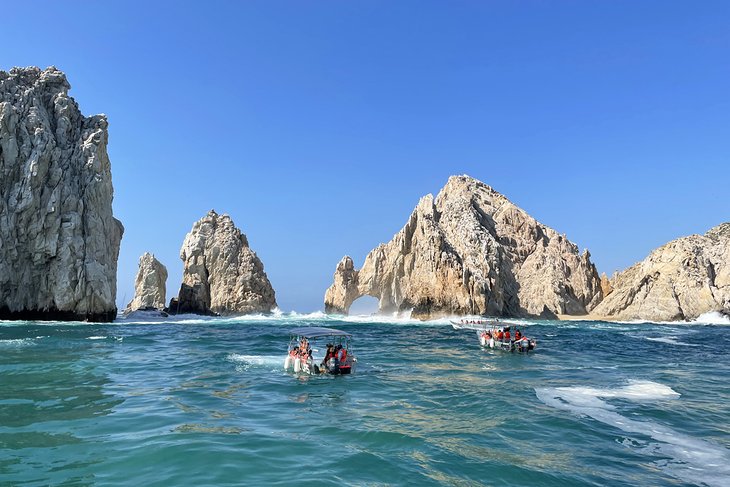 Marking the point where the Gulf of California meets the Pacific Ocean, El Arco de Cabo San Lucas is the most recognizable landmark on the Baja Peninsula.
Marking the point where the Gulf of California meets the Pacific Ocean, El Arco de Cabo San Lucas is the most recognizable landmark on the Baja Peninsula.
The naturally formed stone archway is one of the most photographed spots in the world, and a must-see when vacationing in Mexico's luxury capital, Cabo San Lucas. On one side of the arch is the Playa del Amor (Lover's Beach), while the other side of the arch is home to Playa del Divorcio (Divorce Beach).
What's cool about the arch is that it is only accessible by boat. You can visit the arch a few different ways, whether on a private boat charter, tour, or via a water taxi that can be arranged in the Cabo San Lucas Marina.
7. Explore Mexico's Cenotes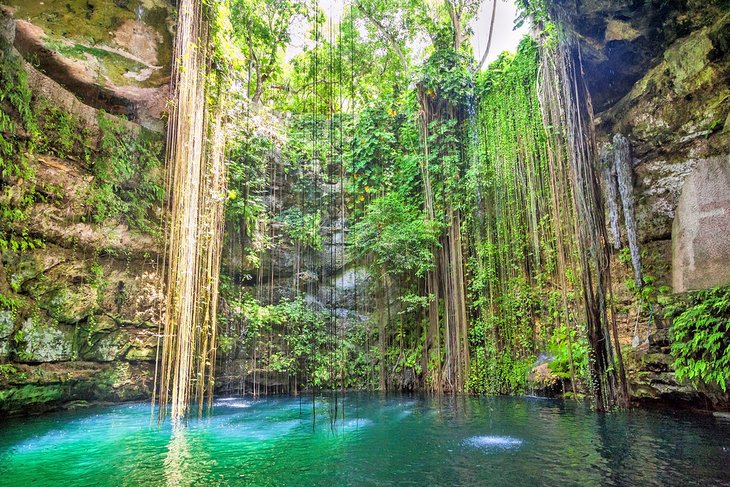 All across the Yucatan Peninsula, just a stone's throw from the majority of the area's popular vacation spots, are approximately 20,000 cenotes. Cenotes are underground caverns connected by a series of rivers that vein the entire peninsula, from the coast to deep into the jungle.
All across the Yucatan Peninsula, just a stone's throw from the majority of the area's popular vacation spots, are approximately 20,000 cenotes. Cenotes are underground caverns connected by a series of rivers that vein the entire peninsula, from the coast to deep into the jungle.
The Mayans believed that cenotes were entrances to the underworld, and as such have held cultural importance for hundreds of years. Today, cenotes are integral pieces in understanding Mexico's cultural and topographical history. For tourists, they provide a fascinating way to spend the day understanding the Yucatan's natural environment.
Picture thousands of stalagmites and stalactites, translucent fresh water, and miles of tunnels connecting this mythical, prehistoric underground masterpiece.
Many people take tours from Cancun and Playa del Carmen to see and experience cenotes. Tours are often combined with other activities, like the Horseback Riding and Cenotes Swim from Cancun or Playa del Carmen.
8. Visit the Seaside Ruins at Tulum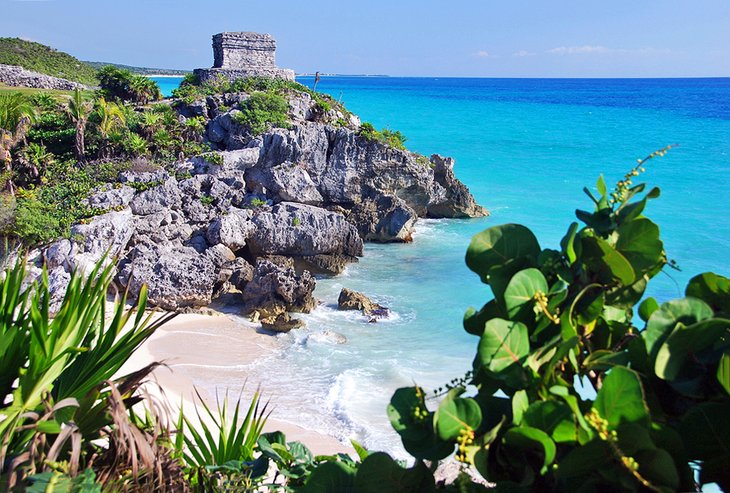 Tulum splashed onto the luxury scene a few years ago, but before that, it was very much a backpacker's paradise, complete with eco-friendly bungalows, cheap eats, and a sparkling beach.
Tulum splashed onto the luxury scene a few years ago, but before that, it was very much a backpacker's paradise, complete with eco-friendly bungalows, cheap eats, and a sparkling beach.
Today, Tulum is very much five-star boho chic, with luxury boutique hotels, A-list cuisine, and high-end shopping. The town still manages to retain a laid-back vibe, but it comes at a premium price tag.
But more than a playground for the posh, Tulum is home to some of Mexico's most iconic ruins. The ruins at Tulum tell the story of an ancient Mayan port, perched high on the cliffs overlooking the pristine beach below.
A trip to the archaeological site is definitely worth a visit, if only to grab the iconic shot of the watch tower against the backdrop of the electric blue sea.
9. Tour Mexico's Best Archaeological Sites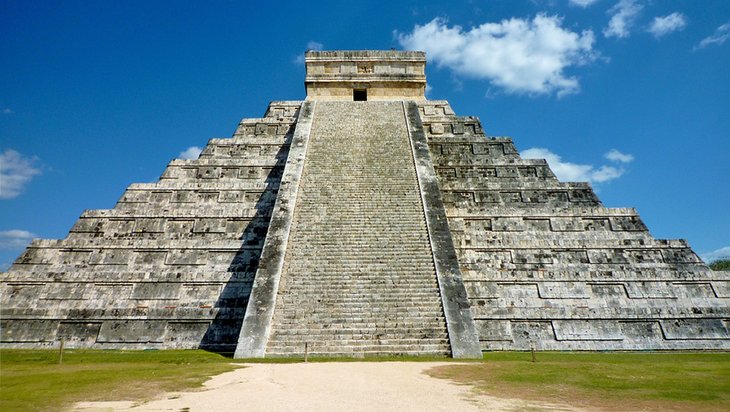 Speaking of Tulum's ruins, Mexico is a veritable treasure trove of archaeological sites. The country has been home to dozens of indigenous tribes, far beyond the Mayans and the Aztecs. Some of the other indigenous groups include the Zapotecs, Olmecs, Toltecs, and Huichols, just to name a few.
Speaking of Tulum's ruins, Mexico is a veritable treasure trove of archaeological sites. The country has been home to dozens of indigenous tribes, far beyond the Mayans and the Aztecs. Some of the other indigenous groups include the Zapotecs, Olmecs, Toltecs, and Huichols, just to name a few.
As a result, the country is packed with literally hundreds of ruins all across the country. Some are well-known, like the Mayan city of Chichen Itza, which is one of the New Seven Wonders of the World.
There is also Teotihuacan, the ancient Aztec city just outside Mexico City. But other sites include Monte Alban, a Zapotec site near the city of Oaxaca, and Palenque, which is a jungle-shrouded Mayan city in the state of Chiapas. Other sites to know are Calakmul in Campeche, Uxmal in Yucatan, and Guachimontones in Jalisco.
10. Soak Up Colorful History in San Miguel de Allende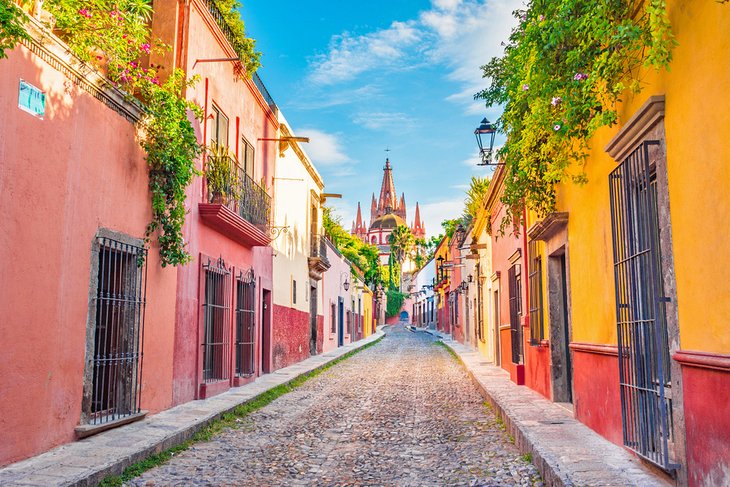 When it comes to colonial cities in Mexico, none is as magical or visually stunning as San Miguel de Allende. Just three hours outside Mexico City is this spectacular jewel, which was named a UNESCO World Heritage Site in 2008. The city was the first Spanish settlement in the state of Guanajuato, founded in 1542.
When it comes to colonial cities in Mexico, none is as magical or visually stunning as San Miguel de Allende. Just three hours outside Mexico City is this spectacular jewel, which was named a UNESCO World Heritage Site in 2008. The city was the first Spanish settlement in the state of Guanajuato, founded in 1542.
What makes San Miguel de Allende so special is its artistic spirit. For decades, it has lured travelers from all over the world to experience its local art scene, colorful architecture, cobblestone streets, and glorious mountain views.
San Miguel de Allende always acted as a cultural melting pot, as it was part of the Spanish Royal Route to the interior of Mexico. Many of its iconic Mexican Baroque buildings were constructed in the 18th century. Today, it is considered a UNESCO World Heritage Site because of its Outstanding Universal Value.
The city has evolved to become one of the top luxury getaways in the country, with five-star boutique hotels, spas, restaurants, and art-forward events.
11. Learn about Frida Kahlo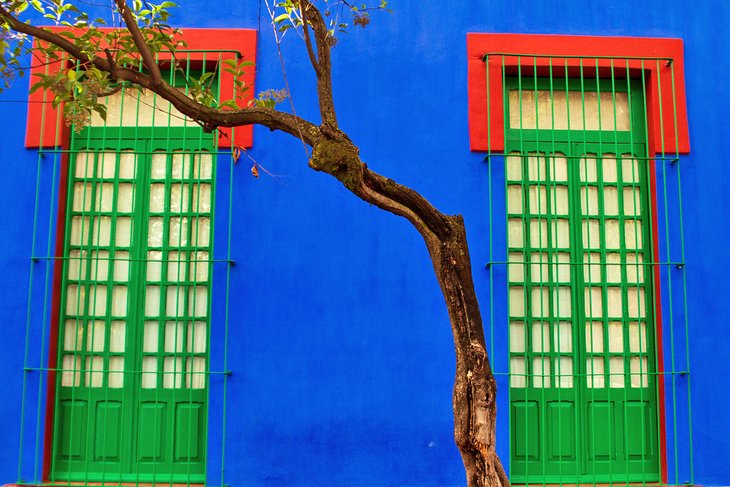 One of the most iconic faces of Mexico is that of Frida Kahlo. An icon of Mexican art, culture, and feminism, her influence on Mexico is undeniable. The best way to learn about this incredible woman is to visit her former home in Mexico City, Casa Azul, which has been turned into a museum dedicated to her life and work.
One of the most iconic faces of Mexico is that of Frida Kahlo. An icon of Mexican art, culture, and feminism, her influence on Mexico is undeniable. The best way to learn about this incredible woman is to visit her former home in Mexico City, Casa Azul, which has been turned into a museum dedicated to her life and work.
Located in the suburb of Coyoacan, Casa Azul is where Kahlo spent the majority of her time. It is where she was born, and eventually it was where she died. It showcases personal objects that help tell her story, as well as some of her most important pieces of art.
It's one of Mexico's most important museums and helps visitors understand so much more about the depth and layers of Mexico and its people.
12. Wander through Mexico City's Centro Historico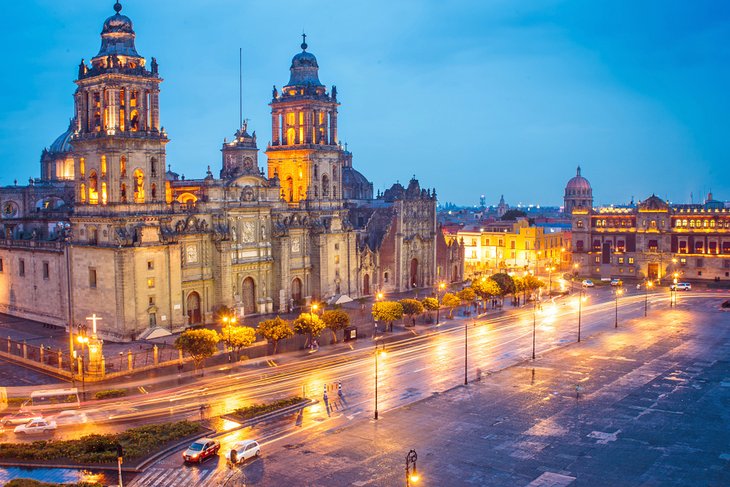 Mexico City is defined by its dozens of diverse, cultural, and colorful neighborhoods. But for first-timers to Mexico City, the most important stop is the Centro Historico. This gives a perfect snapshot of the country's capital over the past several centuries.
Mexico City is defined by its dozens of diverse, cultural, and colorful neighborhoods. But for first-timers to Mexico City, the most important stop is the Centro Historico. This gives a perfect snapshot of the country's capital over the past several centuries.
Mexico City sits on the former Aztec capital, Tenochtitlan, which the Aztecs founded in the 14th century. Remnants of the original capital can be found in the Centro Historico at the archaeological site of Templo Mayor.
The Templo sits elbow to elbow with magnificent works of Spanish architecture, leftover from the Spanish conquest in the 16th century. The best examples are in the Zocalo, or the main plaza, specifically the Palacio Nacional and the Metropolitan Cathedral. Within the Palacio Nacional are some of the most beautiful murals by Mexican artist Diego Rivera (who was married to Frida Kahlo).
You'll also find the Palacio de Bellas Artes in the Centro Historico. The gorgeous domed building is a cultural center that hosts music, dance, theater, and opera performances.
13. See the Copper Canyon by Train
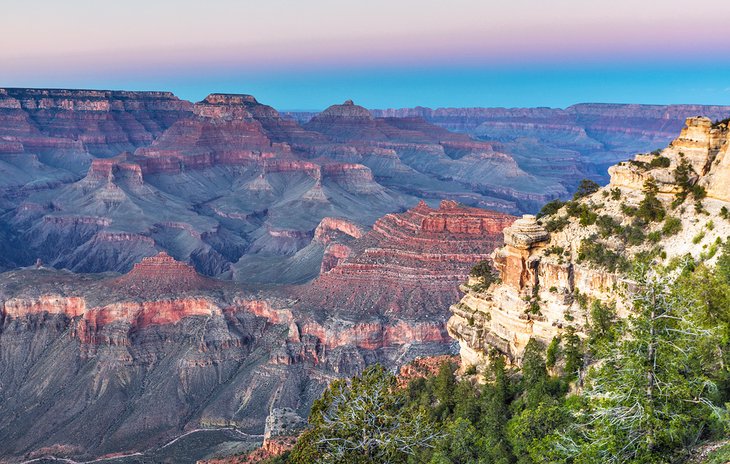
Most people are surprised to learn that Mexico has its own Grand Canyon. In fact, it's even bigger than the one in the United States. Copper Canyon, or Barrancas del Cobre, is a massive canyon in the northern state of Chihuahua, which spans more than 25,000 square miles and is made up of six canyons in the Sierra Madre Occidental.
The canyon is named for its reddish hue, and is one of the most naturally stunning places in the country.
One of the best ways to see the canyon in its entirety is to ride the Chihuahua al Pacifico train, or "El Chepe." The train route runs from Chihuahua to Los Mochis in Sinaloa, which isn't far from the beach town of Mazatlan. A perfect vacation combo is to start with the mountains and end at the beach.
14. Go Eco-Friendly in Bacalar
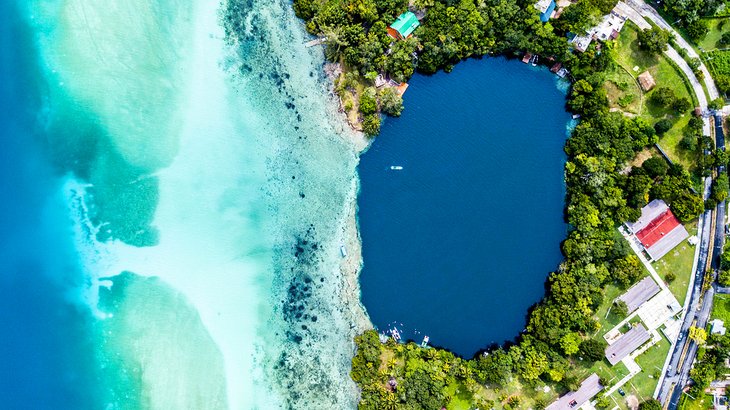
For many travelers in the state of Quintana Roo, the vacation ends in Tulum. But if you keep driving just a few hours more, you'll be rewarded with one of the most spectacular places in all of Mexico: Laguna de Bacalar.
Laguna de Bacalar is Mexico's second largest lake and goes by the nickname, "The Lake of Seven Colors." The jewel-colored lake is as expansive and crystal clear as the Caribbean Sea, dotted with small eco-resorts and pebbly beaches perfect for exploring.
The locals of Bacalar are big proponents of sustainable energy and responsible tourism. Non-motorized sports are much preferred over motorboats on the lake. As such, you'll see dozens of kayaks, sailboats, and stand up paddleboards.
Then there are the eco-hotels, like Mia Bacalar with its own organic waste treatment; water filtration system; and a chef's orchard, which supplies many ingredients for the restaurant's menu.
A small town of the same name sits on the shore, with a few historic sites of interest for sightseeing, like an old Spanish fort, and several Mayan ruins nearby.
The lake stretches nearly 40 miles from end to end and is one of the more under-the-radar destinations in Mexico. But, it's only a matter of time before international tourists find it.